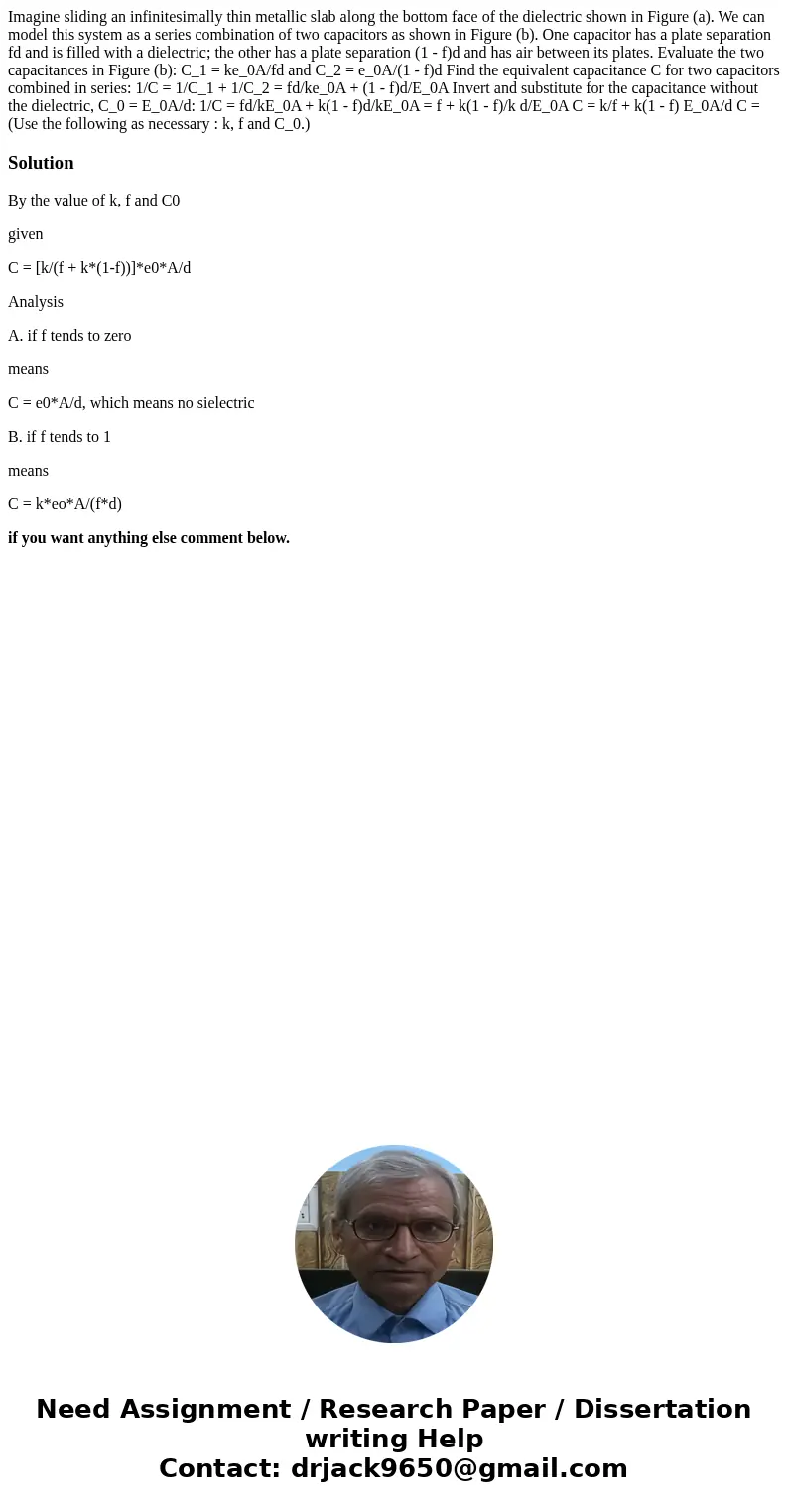Imagine sliding an infinitesimally thin metallic slab along
Imagine sliding an infinitesimally thin metallic slab along the bottom face of the dielectric shown in Figure (a). We can model this system as a series combination of two capacitors as shown in Figure (b). One capacitor has a plate separation fd and is filled with a dielectric; the other has a plate separation (1 - f)d and has air between its plates. Evaluate the two capacitances in Figure (b): C_1 = ke_0A/fd and C_2 = e_0A/(1 - f)d Find the equivalent capacitance C for two capacitors combined in series: 1/C = 1/C_1 + 1/C_2 = fd/ke_0A + (1 - f)d/E_0A Invert and substitute for the capacitance without the dielectric, C_0 = E_0A/d: 1/C = fd/kE_0A + k(1 - f)d/kE_0A = f + k(1 - f)/k d/E_0A C = k/f + k(1 - f) E_0A/d C = (Use the following as necessary : k, f and C_0.)
Solution
By the value of k, f and C0
given
C = [k/(f + k*(1-f))]*e0*A/d
Analysis
A. if f tends to zero
means
C = e0*A/d, which means no sielectric
B. if f tends to 1
means
C = k*eo*A/(f*d)
if you want anything else comment below.

 Homework Sourse
Homework Sourse